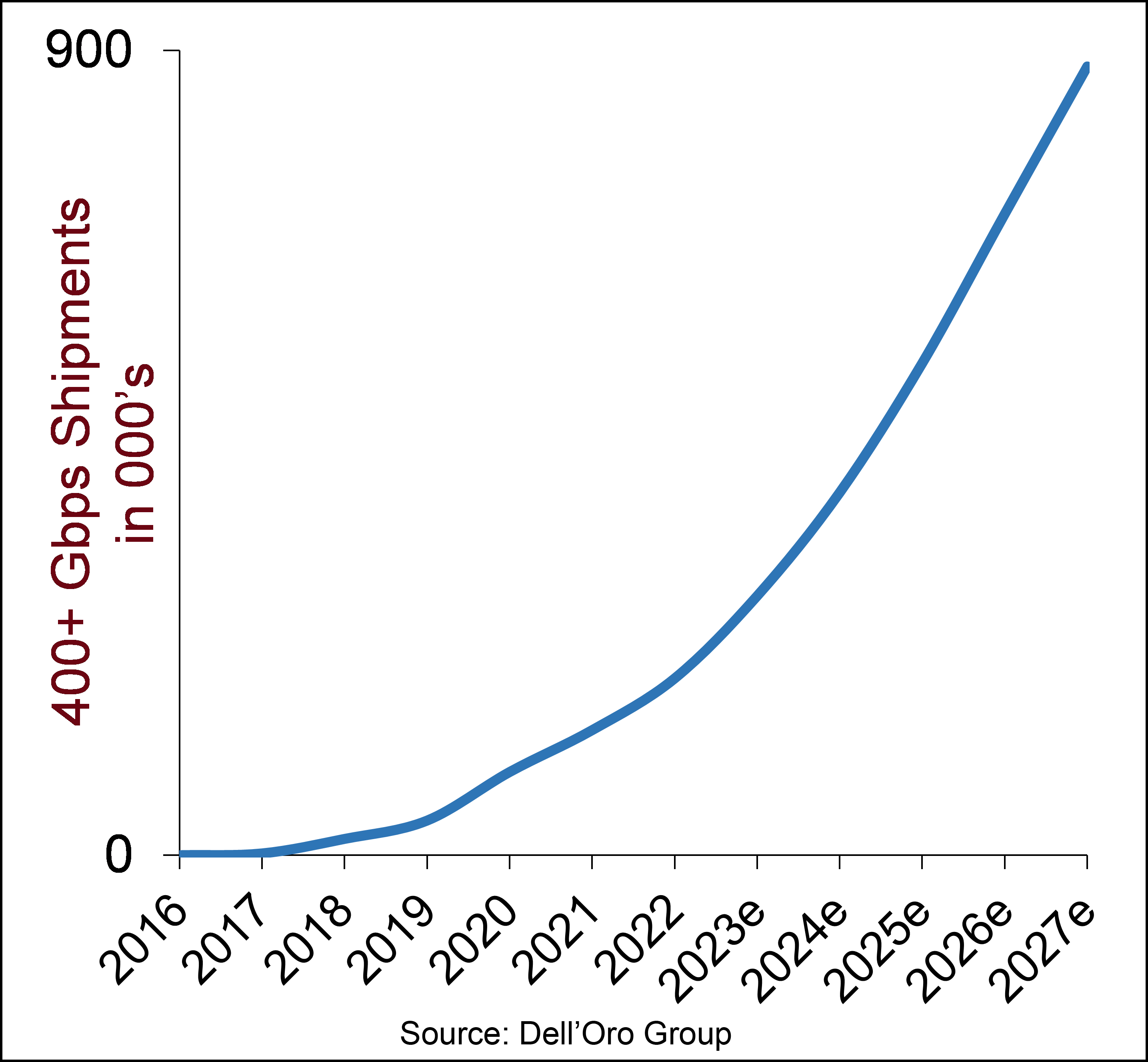OFC 2023 was a great conference this year with the exhibit hall packed with people exchanging thoughts and ideas. One of the main technology themes at the show was around terabit-capable coherent wavelengths. Hence, my main takeaway from the conference was that we are now in the Terabit Era.
During the conference, practically every component and systems manufacturer showed off their plans for a 1.2 Tbps-capable coherent wavelength. The only exception was Ciena with an advanced 1.6 Tbps single carrier solution.
New High-Performance Coherent DSPs
The next generation of coherent DSPs was announced and displayed by several companies. Based on conversations at the show, the first significant quantity of shipments could begin as early as 2H 2023 with a ramp in production during 2024. The following is a list of announcements related to high-performance sixth-generation coherent DSPs.
- Cisco/Acacia Jannu: 1.2 Tbps-capable DSP on a 5 nm node process operating at up to 136 Gbaud. General availability target is mid-2023.
- NEL ExaSpeed GAIA: 1.2 Tbps-capable DSP on a 5 nm node process operating at up to 140 Gbaud. General availability target is mid-2023.
- Nokia PSE 6s: 1.2 Tbps-capable DSP on a 5 nm node process operating at up to 130+ Gbaud. General availability target is end-2023.
- Infinera ICE7: Customized 1.2 Tbps-capable DSP from a partner supplier on a 5 nm node process operating at up to 148 Gbaud. General availability target is mid-2024.
- Ciena WaveLogic 6e: 1.6 Tbps-capable DSP on a 3 nm node process operating at up to 200 Gbaud. General availability target is mid-2024.
On a side note, Huawei was not at this conference. However, in separate meetings with the company, we understand they have plans to develop a 1.2 Tbps-capable DSP operating at up to 130+ Gbaud. The semiconductor process technology is unknown at this time, but it may be 7 nm if SMIC can produce it.
Among the vendors, Ciena is the only one launching a coherent DSP that can do a single carrier 1.6 Tbps wavelength. To accomplish this, the company is not only going with a more advanced semiconductor node process (3 nm rather than 5 nm), but is also developing advanced coherent drivers and receivers that can push the transponder to 200 Gbaud (no other company has 200 Gbaud drivers at this time). To remove any concerns about timing and progress of the WaveLogic 6e development, especially since it is using such an advanced semiconductor process node, Ciena took the time to detail out its development progress behind closed curtains.
Terabit Era Ready
 There were a number of announcements by service providers confirming that 1.2 Tbps-capable devices are ready, and that they themselves were looking forward to these new high-performance transponders. Three of those announcements were as follows:
There were a number of announcements by service providers confirming that 1.2 Tbps-capable devices are ready, and that they themselves were looking forward to these new high-performance transponders. Three of those announcements were as follows:
- Windstream did a field trial in a live network to confirm technology readiness in a real world setting. The field trial used the Acacia CIM8 based on the Jannu DSP and showed that a 1 Tbps wavelength could be carried over at least 541 km with excess performance margin. The wavelength operated over SMF28 fiber with approximately 6 WSS filters along the way.
- GlobalConnect did a field trial of Nokia’s PSE 6s in a live network. In this trial, GlobalConnect tested the 1.2 Tbps-capable DSP for a long haul route, operating at a wavelength speed of 800 Gbps. The route length achieved in this trial was 2,019 km.
- China Mobile did a field trial of the Acacia CIM8 in an ultra-long-haul application, demonstrating that a 1.2 Tbps-capable transponder can transmit a 400 Gbps wavelength 5,616 km in their live all-optical network.
These field trials are a great demonstration of how the coherent 1.2+ Tbps-capable technology delivers on both higher capacity and longer spans. In the January 2023 Optical Transport five-year forecast report, we projected that demand for 400+ Gbps wavelength shipments will grow at a 40% CAGR, and that one of the key enablers for this growth will be these new sixth-generation coherent DSPs.